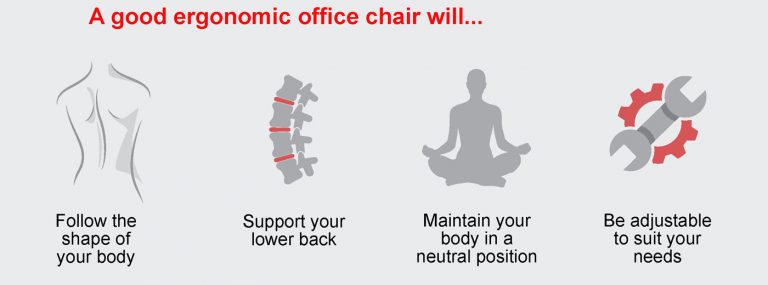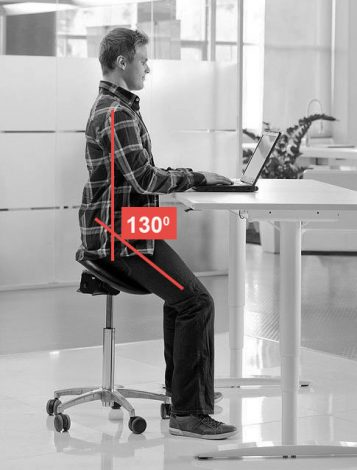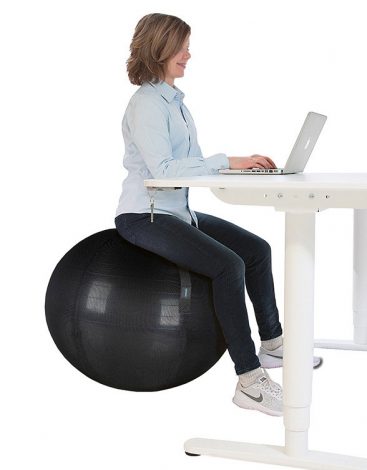- Your cart is empty
- Continue Shopping
What is an Ergonomic Chair?
According to Ergonomic Trends, “an Ergonomic Chair is one that not only follows best practices in terms of proven ergonomic
If you work on a computer at home or in an office, assembly line, medical facility, laboratory, or call centre, how do you go about selecting the best work chair? What type of chair do you need? If your work requires that you spend a lot of time sitting, is a cheap chair worth it?
According to CNBC, working from home during Covid is causing more back, neck and shoulder pain, primarily due to the use of an inappropriate work chair, desk and overall workstation setup. Read more…
There are a few different types of work chairs, each of which has it’s own pros and cons. Let’s have a look at a few of the options. With so many people working from home, what are the 5 most important features on a home office chair?
Unlike your traditional typist chair from the 1960’s and 70’s, an ergonomic office chair is one that aims to alleviate pains and strains caused by sitting for prolonged periods.
Remember: A desk chair is a very personal thing and there is no, and never will be, a “one size fits all”. Best Office Chairs for Tall People

Of critical importance is that the chair is correctly adjusted for your height and your working environment.
Not adjusting your chair correctly can quickly result in musculoskeletal pain in your lower back, neck, shoulders, hips and knees.
An Ergonomic chair helps to prevent back problems caused by sitting for long periods. These chairs are designed to support your body while you work, and are best suited to all types of office, computer, and study work.
Orthopedic chairs include all the common design features of ergonomic office chairs, but there are crucial differences between the two chair types. They will also prevent back, neck and shoulder pain caused by incorrect sitting. Both Orthopedic and Ergonomic chairs promote Dynamic Sitting.
Orthopedic chairs alleviate the impact of sitting on existing medical preconditions of the lower back. Anyone with sciatica or other musculoskeletal issues of the spine, should consider using an orthopedic chair. These chairs are ideal for all types of computer, office and study work.
If the work environment is more demanding, or you are a ‘Big & Tall’ person, you need a chair with superior strength and durability. For example, in a 24/7 control room or call centre, multiple shifts require chairs that are used around-the-clock. Alternatively, a person weighing 150kg will need a work chair that is both larger and stronger to accommodate their frame. What makes an office chair ‘heavy duty’?
In both these instances, standard chairs simply don’t measure up. Either because they are rated for a maximum of 120kg, and/or are designed for a normal 8-hour working day.
Heavy-Duty chairs are designed for extreme use, either by Big & Tall people, or in call-centres and control rooms that operate 24/7.
The Heathrow 24/7 Heavy Duty Orthopedic Chair is not only rated to 180kg, but also has the advantage of having true orthopedic functionality.
Heavy-Duty chairs are designed for extreme use, either by larger-framed people, or in call-centres and control rooms that operate 24/7.
Laboratories and medical facilities need a different type of work chair. The high working surface requires an adjustable chair with a footring and no armrests. Forensic laboratories, teaching environments, physiotherapists and other medical practitioners, frequently use these seats as they allow them to quickly move from one area to the next.
Because they are often used in a sterile environment, lab stools are usually made from easily cleaned materials, like integral-skin polyurethane (PU).
Laboratory and medical chairs are designed for a higher work surface and sterile work area.
Factory or industrial chairs used on production lines and in workshops need to be extremely robust. In many cases, these chairs are used by workers as a “temporary rest” to reduce static muscle loading.
In certain industrial environments like food processing, it is important that the chairs are easy to clean. For these applications, a non-porous vinyl upholstery is better than mesh or fabric. In many workshops, a robust chair is needed, for example one where the seat and back are covered with self-skinning polyurethane (PU) foam.
Factory chairs are designed for harsh work areas.
Kneeling chairs distribute your weight between the pelvis and the knees which reduces spinal compression, and therefore the stress and tension in the lower back and leg muscles. Because of their geometry, they don’t require a backrest. However, in most cases you need to sit at a table or desk that is higher than normal. The pros and cons of a height adjustable standing desk.
The underlying principle of a kneeling chair is to maintain an ‘open’ pelvis while you are sitting. An ‘open’ pelvis is when the angle between your spine and thighs is at least 1100.
An open pelvis reduces the strain in your lower back that normally occurs when you sit on a conventional chair.
By opening the pelvis and lowering the knees in relation to the hips, the disc pressure in the lumbar region of the spine is reduced by up to 65% when compared to sitting in a traditional chair with a 900 back-thigh angle. It is important to note that anyone with knee problems may have difficulty sitting on a kneeling chair. What actually happens when you sit?
Kneeling chairs are designed to improve your posture by sliding the hips forward and aligning the back, shoulders, and neck.
The saddle chair can be used while you work at a desk, computer, with a patient, or at a workbench. This chair is in the shape of a horse’s saddle and you sit in a position somewhere between sitting and standing.
Saddle chairs are a good option if you move around the room a lot during the day. For this reason, they have become the “seat of choice” for dentists, physiotherapists and other medical practitioners that spend large parts of their day moving around and bending over patients. However, if you sit in a stationary position for most of the day, they can be quite tiring on the core and back muscles. As a work chair, a saddle seat is often not a cheap option.

Like a kneeling chair, a saddle chair opens the pelvis while you sit. However, the angle between your spine and thighs is usually greater, typically about 1300.
Saddle chairs are often preferred to kneeling chairs because firstly there is no pressure on your knees, and secondly, their height is easily adjusted. However, they are far more expensive.
A saddle chair requires a higher desk or work surface, and ideally the desk should height adjustable. Should you alternate between sitting and standing at work?
Saddle chairs are designed to improve your posture, reduce lower back pain and prevent slouching.
A Ball Chair may improve posture and increase the use of your core and back muscles while you sit and work. The big advantage of a ball chair is that it encourages movement and active sitting. Because there is a slight bouncing movement as you sit, your muscles are continuously stimulated which encourages good blood flow through your back, core and leg muscles. This reduces stress and fatigue. Ball chairs are often recommended by physiotherapists to address musculoskeletal issues resulting from poor posture. Choosing the Right Exercise Ball
Although ball chairs are available in different sizes, they are not height adjustable. Because they are quite large and cumbersome, they are difficult to store.
Some ball chairs are modified with a base frame with castors for improved mobility, and they may even have a backrest.
As is the case with kneeling and saddle chairs, a ball chair usually requires a higher work surface.
Sitting on a ball makes slouching difficult, and the constant re-positioning needed to stay on the ball, constantly activates core muscles so as to maintain balance.
Ball chairs are designed to encourage active sitting, improve your posture, and reduce lower back pain.

If you work in an environment that requires you to sit down, make sure you get the RIGHT chair and workstation setup.
As is the case with so many things in life, “get the right tool for the job and make sure you use it correctly!”
If you work in an office on a computer, you will typically spend a lot of time sitting, and in order to protect your health, a cheap chair may not be a good investment. Cheap office chairs – what do they REALLY cost me?
Contact us for more information.
According to Ergonomic Trends, “an Ergonomic Chair is one that not only follows best practices in terms of proven ergonomic
What is an orthopedic office chair and how does if differ from an ergonomic chair? Which is best for chronic lower back pain?
Office chairs have an array of levers and knobs to adjust the backrest, seat and armrests. How do you achieve a healthy sitting posture?